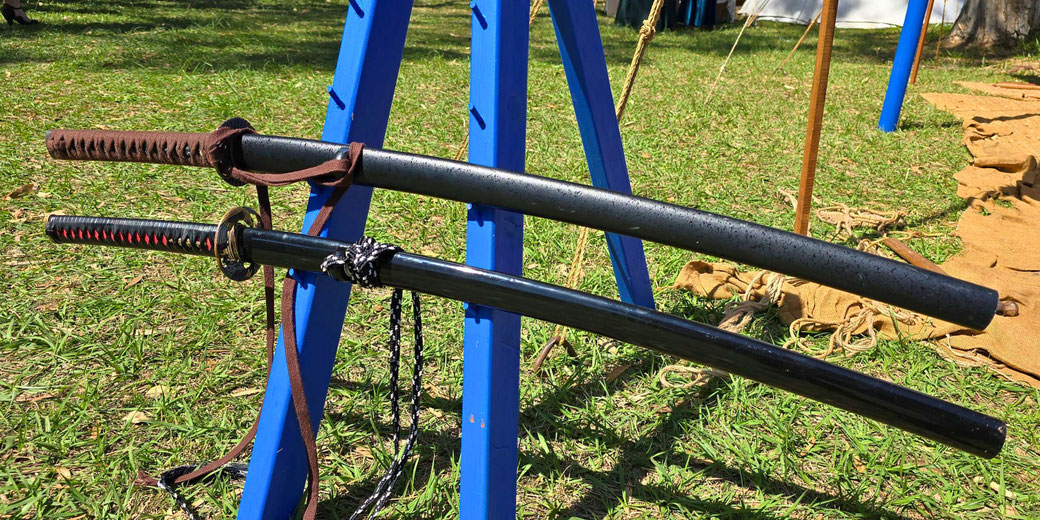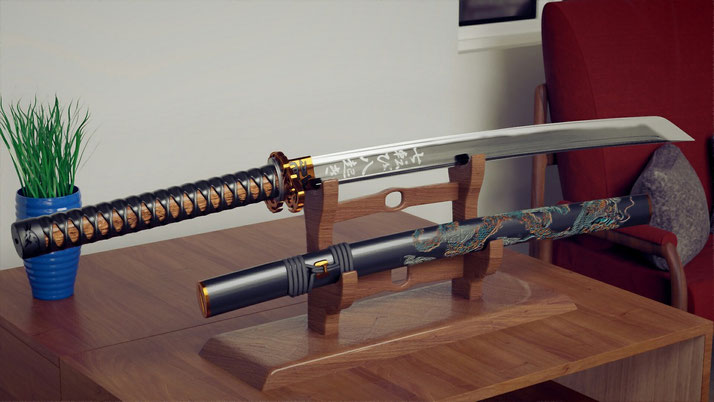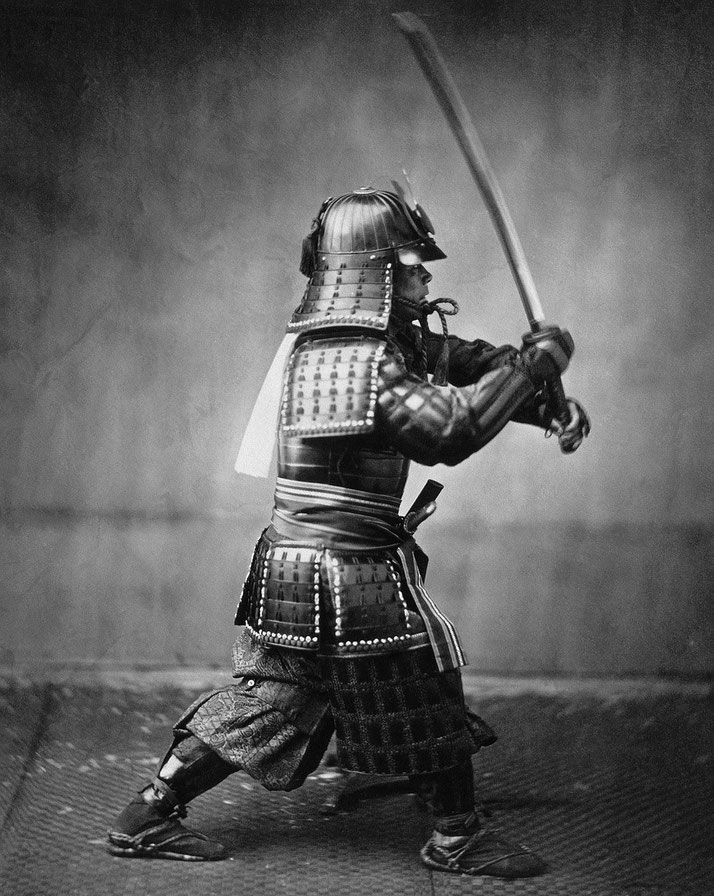Soul of the samurai: The craft and combat of Japan's legendary katana swords

The katana became the most recognisable weapon of Japan’s samurai, known for its deadly efficiency and fine craftsmanship.
Swordsmiths forged it with exceptional skill, and the katana came to represent the spirit and honour of the warrior who wielded it.
The curved blade and precise balance set it apart from other swords, which made it well suited for swift, powerful strikes.
History of the Japanese katana
During the Heian period from 794 to 1185, changes in warfare created a need for a faster and more versatile sword.
Earlier weapons such as the tachi were longer, more curved, and worn edge-down, which made them suitable for mounted combat but less effective in close fighting.
The Mongol invasions of Japan in 1274 and 1281 exposed the limitations of curved cavalry swords like the tachi.
As warfare continued to evolve, swordsmiths gradually developed the uchigatana style, and by the late Muromachi period in the 15th century, the katana became distinct as a weapon worn edge-up for quick drawing and cutting.
Warriors wore the new blade through the obi, which enabled the draw-and-cut technique known as iaijutsu.
Over the Muromachi period between 1336 and 1573, the katana became increasingly common as clan conflicts intensified across Japan.
In the turbulent Sengoku period of the 15th and 16th centuries, the weapon gained even more importance as infantry combat dominated warfare.
Famous swordsmiths such as Masamune, a master of the Soshu tradition in the late Kamakura period, advanced forging methods that produced blades well known for their lasting quality and appearance.
His techniques, developed more than a century before the Sengoku era, set high standards for quality that later craftsmen continued to refine.

The design of a katana
In a typical katana, the blade measured between 60 and 80 centimetres and weighed between 1 and 1.3 kilograms.
Its single curved edge made it well suited to slicing strikes. The blade combined two kinds of steel so that the cutting edge had high carbon content for hardness, while the spine used softer steel that provided flexibility.
As a result, the sword achieved a balance of sharpness and durability that few weapons could rival.
For the hilt, or tsuka, craftsmen fashioned a grip long enough for two-handed use, which they covered in stingray skin and then wrapped in cord.
The guard, or tsuba, could display elaborate designs that highlighted wealth or family symbols, or it may be kept simple and functional.
The tsuba balanced the blade and protected the hand during combat. Repeatedly folding the steel 10-15 times created over 30,000 thousand layers. This caused the blade to develop a grain pattern called hada, and the process of differential hardening created the distinct hamon along the edge.
How to make a katana
At the beginning of the forging process, swordsmiths produced tamahagane, a steel made by smelting iron sand in a clay furnace known as a tatara.
The tatara ran for several days and produced tamahagane of varying quality, only a portion of which could be used to make high-quality blades.
The smith selected pieces of steel with different carbon levels, then heated and folded the metal many times to remove impurities and create layers that gave the blade strength and flexibility.
Swordsmiths checked if the blade was ready for quenching by its colour when it glowed in the furnace.
After shaping the blade, the smith coated it in clay, applying a thin layer to the edge and a thicker layer to the spine.
Once the blade had been heated and quenched in water, the edge hardened while the spine stayed more flexible.
Afterward, the blade was given to an expert polisher called a togishi, who spent weeks sharpening and improving it to bring out the hada (grain) and hamon (temper line).
Finally, separate artisans crafted the fittings, including the tsuba, tsuka, scabbard, and habaki, which were attached once the polishing was finished.
How to fight with a katana in battle
In the training halls of Japan, samurai studied kenjutsu to learn exact movements and full control of the katana.
With its curved shape and balance, the sword could be drawn and used in a single smooth action.
Drawing and striking in one motion formed the basis of iaijutsu and battōjutsu.
With a two-handed grip, a warrior delivered strikes with power and kept the ability to change speed and direction instantly.

On the battlefield, samurai used a range of cuts and thrusts aimed at the weak points of an opponent’s armour.
In many cases, a wakizashi was carried alongside the katana, and together they formed the daishō, a pairing that showed both status and readiness for combat.
Several sword schools such as Katori Shintō-ryū and Kashima Shintō-ryū taught different techniques and stances, each with its own rules that controlled timing and distance together with methods of attack.
Warriors changed these methods for encounters with spear-wielding opponents or in close fighting after losing a bow or yari (spear).
The spiritual ceremonies to care for a katana
For many warriors, cleaning, polishing, and oiling the blade became an act of respect that strengthened their connection to the sword.
They used uchiko powder to take off oil and dirt, followed by choji oil to protect the blade from rust.
During maintenance, each step followed an exact order and the ritual stressed discipline and preservation.
Before forging a blade, swordsmiths often performed cleansing rituals and prayed to the gods for guidance and success.
In many families, swords were named and passed down as prized heirlooms from one generation to the next, which often had names that referenced deities, virtues, or natural forces.
Stories of famous swords like the Honjo Masamune, which the Tokugawa shogunate held as a valued family heirloom, increased the katana’s reputation and it came to symbolise the ruling authority of the shoguns.
Some temples and shrines, such as the Atsuta Shrine, also housed swords as sacred objects.
How katana-making knowledge was transferred
Over many centuries, swordsmiths maintained strict traditions as knowledge passed from master to apprentice.
In different regions, different forging methods developed, including the Bizen, Soshu, and Yamato styles, and certain families became known for making very high-quality blades.
Famous sword makers such as Masamune and Muramasa created swords that earned reputations for cutting power and balance.
Under the Tokugawa shogunate between 1603 and 1868, Japan entered a long period of peace that lowered the need for weapons used in battle.
Following the 1876 Haitōrei Edict during the Meiji Restoration, samurai were banned from wearing swords in public, signifying a formal end to the katana’s role as a combat weapon and transforming it into a ceremonial item.
Swordsmiths continued to forge katana, giving greater emphasis to artistry and keeping long-established methods.
Over time, the katana came to embody both skill and cultural identity, and it kept its place as a respected symbol of the samurai tradition.
What do you need help with?
Download ready-to-use digital learning resources
Copyright © History Skills 2014-2025.
Contact via email
With the exception of links to external sites, some historical sources and extracts from specific publications, all content on this website is copyrighted by History Skills. This content may not be copied, republished or redistributed without written permission from the website creator. Please use the Contact page to obtain relevant permission.





